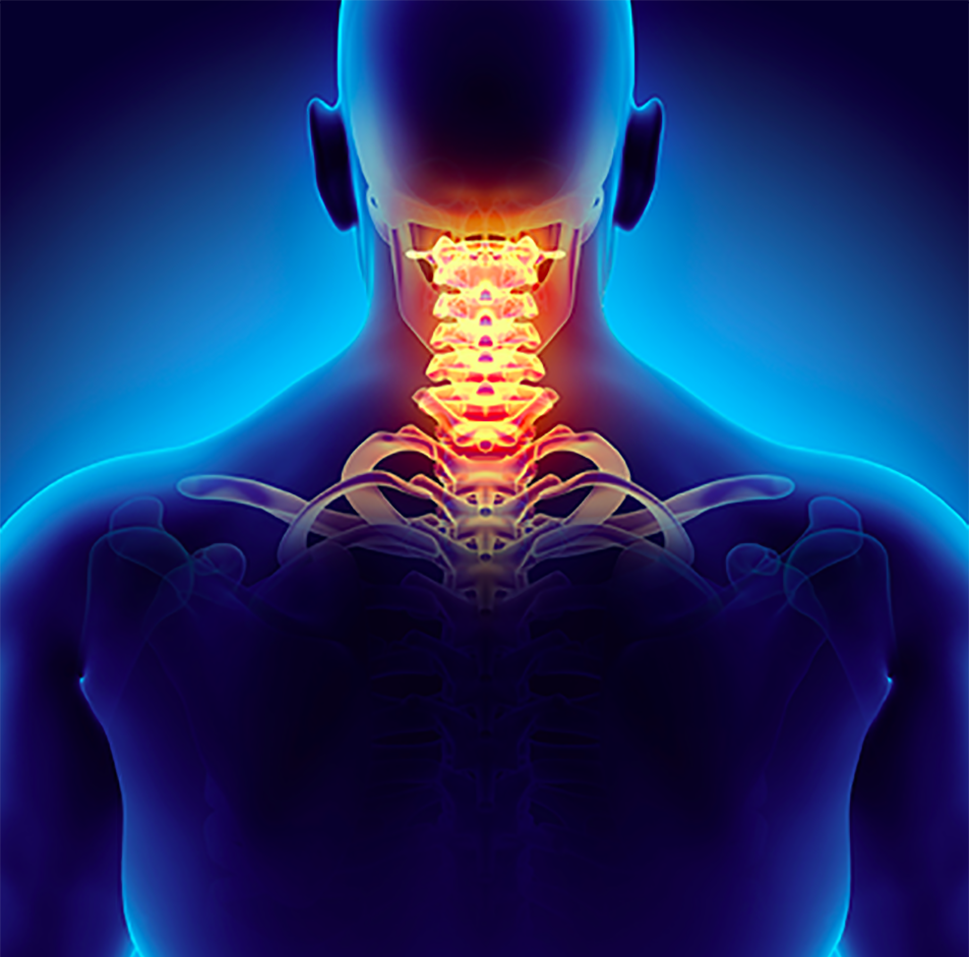With so many critical functions literally resting on your cervical spine, when something goes wrong, it’s important to get it taken care of in an expedient manner. Here are some of the most common types of cervical spine conditions Dr. Wirchansky treats:

Cervical Spine


Neck Bones
Your cervical spine is located in your neck area and is a delicate structure comprised of bones, nerves, muscles, ligaments, and tendons.

Brain Waves
Remarkably flexible, the cervical spine houses the spinal cord, which sends messages from your brain to areas throughout your body.

The Vertebrae
The cervical spine is made of seven bones, called vertebrae, which are separated by gel-filled discs that cushion and stabilize the vertebrae.

Heads Up
The cervical spine supports your head which weighs approximately 10 lbs. The cervical spine is flexible and facilitates the normal range of motion of our heads.
Cervical Degenerative Disc Disease
Your cervical discs both stabilize your neck and allow it to turn smoothly from side to side and bend forward to back. Over time, these natural shock absorbers become worn and can start to degenerate. This is known as cervical degenerative disc disease.
Cervical Disc Degeneration causes narrowing of the space between the vertebrae and results in nerve root compression. Disc-osteophyte complexes develop over time, which can result in frank spinal cord compression.
In most cases, cervical degenerative disc disease can be treated without surgery. Nonsteroidal anti-inflammatory medications can reduce pain and inflammation, while physical therapy can help increase your range of motion and reduce your pain and stiffness.
Surgery is an option if these treatments don’t offer relief. Dr. Wirchansky will go over all options with you, and you will decide together which makes the most sense for you.
Surgical options include anterior and posterior approaches to the cervical spine. The anterior approach includes removal of the disc material and bone spurs and stabilization of the motion segments with an interbody cage. The posterior approach includes the removal of the laminae and ligamentum flavum and a screw-rod construct to stabilize those motion segments.
Cervical Stenosis & Spinal Cord Compression
Cervical stenosis occurs over a number of years and results in the thickening of ligaments, the formation of bone spurs, and the deterioration of the disc material. As a result, the spinal canal narrows and compresses the nerve roots and spinal cord.
Cervical stenosis may cause neck or arm pain, numbness and weakness in both hands, loss of coordination when walking or during other activities, or muscle spasms in the legs
Although conservative treatment may be sufficient to alleviate symptoms of stenosis, surgery is recommended if there are signs that the spinal cord is compressed or there is a significant risk that the spinal cord may become damaged. Cervical spine surgery can be performed from the front or back of the neck. The goals of surgery are to decompress the spinal cord and nerve roots and to stabilize those motion segments. Spinal fusion may be performed to stabilize the spine or if a disc is removed.
Vehicle Crashes
Of the 12,000 new cervical spine injuries in the U.S. each year, the majority are the result of accidents caused by moving vehicles.
Sports Injuries
Sports account for less than 1,000 of the cervical spine injuries each year, with football accounting for the majority of them.
Employed
Although 58% of people are employed at the time they are injured, only 12% are employed at one year after their injuries.
Gender
The overwhelming majority of people with new cervical spine injuries are male, and on average are in their 40s.



